We settled into the Wen Hui Hotel, recomended by our new friend the timber tycoon. A decision we would later regret as nightly loud music and disapearing hot water had us change hotels after 2 nights.
Why Lvchun? Local color and rice terraces. The local women wear their traditional costumes, incuding the ones who drive the electric carts!
The first day we headed east on S214 30 kilometers to the town of Habo at Km 367 for terrace viewing. A pretty good outing.
The second day we headed west on S214 to Number 2 Bridge at Km 406 and walked up into the hills for a great day of walking and terrace viewing. Not to mention that on the way back we scored our first ever ride in a blue work truck.
Electric bus driven by a local woman.
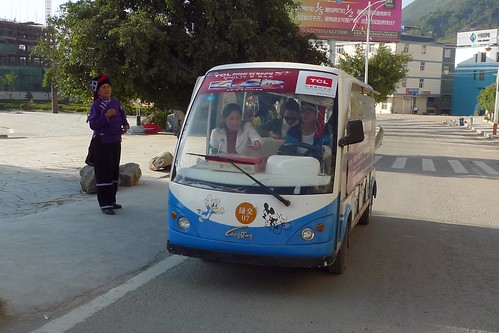
Riding in the cab of a blue work truck.
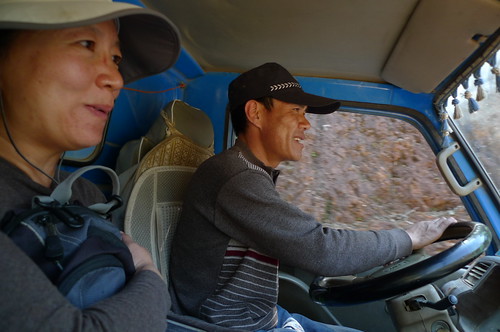
Lots of photos of the terraces:
This guy was checking on his fields outside of Habo and sat down next to us for a chat.
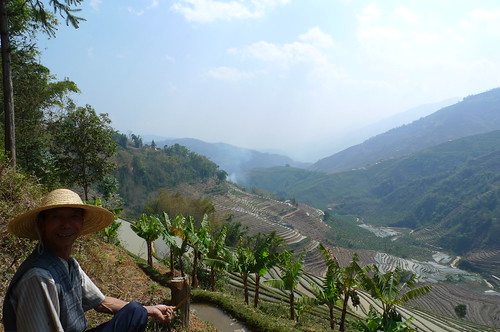
Sun-Ling walks the Habo terraces.
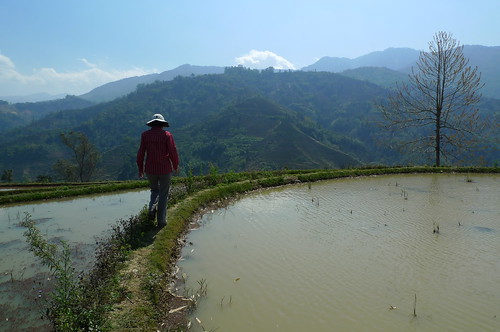
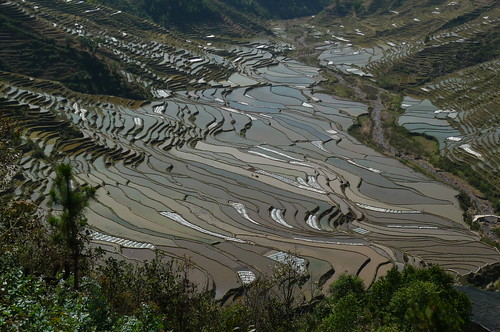
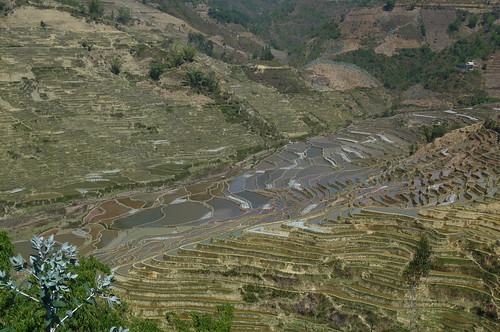


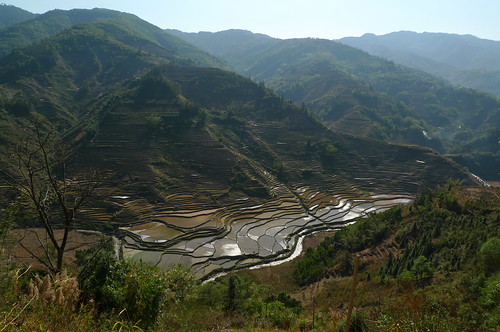

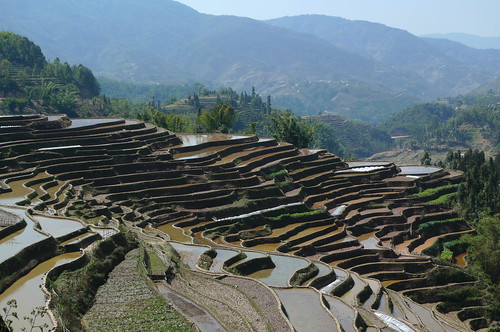

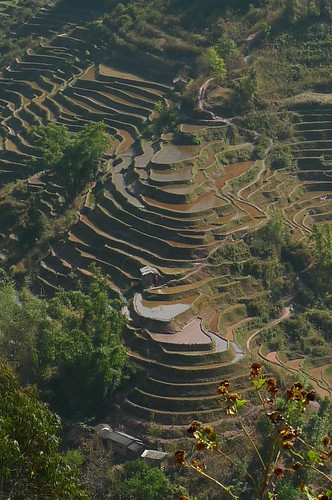
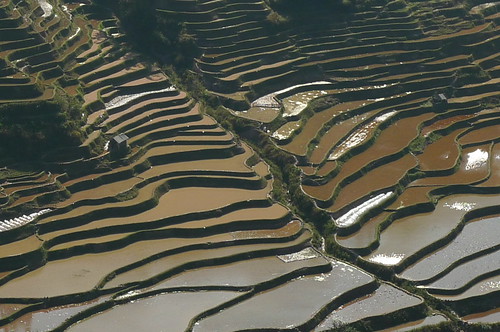

What beautiful geometry of rice paddies, nice photos, John. I suppose some are centuries old and all planted by hand. Lots of labor required by that effort.
ReplyDeleteI should've added the rice paddies are clearly visible in Google Maps' sat view http://g.co/maps/24we2
ReplyDeleteThe pictures of the terraces are amazing!
ReplyDeleteEd,
ReplyDeleteThat GM image is exactly where some of the photos were taken. Thanks!
Yes, all the terraces are constructed and planted by hand or beast.
-john